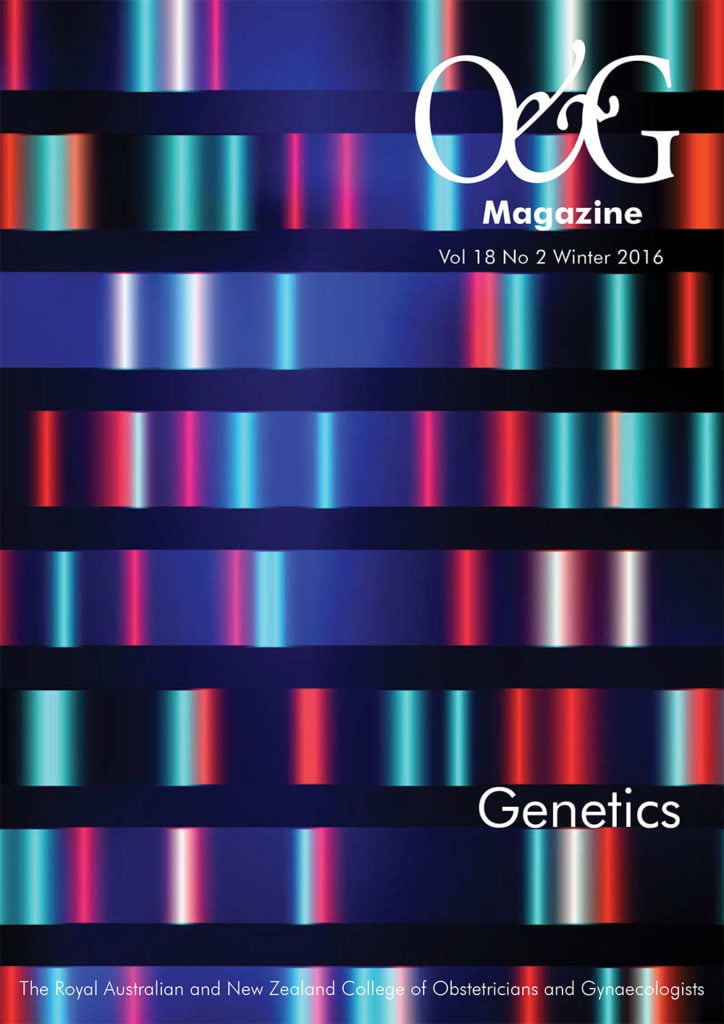Summary
Sex chromosome disorders are a group of conditions within the DSD classification, and include both numerical and structural abnormalities. There is a broad range of severity of phenotype, depending on the number of additional chromosomes or extent of the structural defect. Management is individualised, depending on clinical features and presence of other morbidities. Removal of dysgenetic gonads containing Y material is indicated, owing to the significantly increased risk of malignancy.
Sex chromosome disorders are one group within the classification of disorders of sex development (DSD). The two other main subcategories are the 46XY DSD group – which includes androgen insensitivity syndrome and pure gonadal dysgenesis – and the 46XX DSD group, of which congenital adrenal hyperplasia and Müllerian agenesis are examples.1 Sex chromosome disorders may be further classified into numerical abnormalities (aneuploidies) or structural defects.2 The latter include chromosome deletions, duplications and translocations. These defects present with a variable phenotype, which may include hypotonia, intellectual disability and seizures.
The most common sex chromosome aneuploidy in females is 47XXX (triple X), with an incidence of one in 1000. Diagnosis is usually an incidental finding, if made at all. Features include tall stature and a higher incidence of development delay. The majority have normal puberty and fertility, though premature ovarian insufficiency can occur. There is no increased risk of chromosomal abnormality in offspring. The incidence of males with a 47XYY karyotype is around one in 2000. Affected men have tall stature, delay in speech and motor development, and behavioural issues. Pubertal development is normal and most are fertile. The majority of these men also remain undiagnosed. Cases of 49XXXXY, 49XXXXX and 49XYYYY have also been reported. Severity of phenotype appears to worsen with increasing numbers of chromosomes.
Turner syndrome
Turner syndrome occurs in one in 2500 liveborn females. Karyotype may show 45XO, a 45XO/46XX mosaic, or a 45XO/46XY mosaic in a small number of cases, with or without a partial deletion of the Y chromosome. A small number have a structural abnormality of the second X chromosome, such as a deletion of the short arm. Most cases are sporadic mutations rather than inherited. The presence of Y material is associated with the development of gonadoblastoma and dysgerminoma in up to 12 per cent of cases, so prophylactic gonadectomy is indicated.
The phenotypic presentation of Turner syndrome is broad, ranging from complete ovarian failure in childhood through to an absence of clinical features and normal reproductive outcomes. The severity of features in patients with mosaicism is dependent upon the percentage of abnormal cells in relevant tissues. Features include: short stature, broad chest, webbed neck, low-set ears and micrognathia. Intelligence is usually normal, but there may be difficulties with spatiotemporal processing.
Associated abnormalities are common. Cardiac abnormalities occur in one-third of cases and include bicuspid aortic valve, aortic coarctation and aortic dilatation with risk of dissection. Renal anomalies, such as horseshoe kidney, occur in around 50 per cent of cases. Hearing impairment, otitis media, scoliosis, hypertension, osteoporosis, diabetes and coeliac disease are also more common. Screening for these conditions is part of the initial management.
Treatment of Turner syndrome includes growth hormone where indicated to achieve maximal height. If spontaneous pubertal development does not occur, pubertal induction is required, with ongoing hormone replacement in adulthood. Spontaneous ovulation and pregnancy can still occur, so contraception is advised. There is an increased risk of adverse pregnancy outcome, including a two per cent risk of maternal mortality from aortic dissection. There is a higher incidence of chromosomal abnormality in offspring, including Turner syndrome and Trisomy 21. Lifelong follow up by a multidisciplinary team is warranted.3
Klinefelter syndrome
Klinefelter syndrome affects one in 500 to 1000 liveborn males and is the most common congenital cause of primary hypogonadism. The 47XXY karyotype is a result of nondisjunction of the sex chromosomes during meiotic division and can be maternal or paternal in origin. Male infants are phenotypically normal and diagnosis is often delayed until the male is investigated for infertility. Tall stature occurs secondary to an increased length of the long bones of the leg owing to testosterone deficiency.
Other features include small, firm testes, gynaecomastia and very low sperm counts or azoospermia. Lutenising hormone (LH) and follicle-stimulating hormone (FSH) are elevated and testosterone levels are lower than normal. There is a higher incidence of cryptorchidism, which further affects these parameters. There is an increased incidence of mental health disorders, autism spectrum disorder and social difficulties, marked by a lack of insight, poor judgment and an impaired ability to learn from adverse experience.4 There is impairment in higher levels of language competence and difficulty in sustaining attention without impulsivity.
Klinefelter syndrome is also associated with an increased risk of other morbidities, including the following: pulmonary disease, such as bronchiectasis and emphysema; cancer, specifically breast cancer and non-Hodgkin lymphoma; systemic lupus erythematosus; and diabetes.
The mortality from breast cancer in this group is much higher than in the general population. Treatment is with testosterone replacement, which results in significant improvement in quality of life. Fertility may be achieved by testicular aspiration and intracytoplasmic sperm injection (ICSI). There is a higher incidence of chromosomal abnormalities in the offspring of men with Klinefelter syndrome.5
Mixed gonadal dysgenesis
Mixed gonadal dysgenesis is characterised by asymmetric reproductive anatomy. There is usually a normal or dysgenetic testis and Wolffian ducts on one side, and a streak ovary with underdeveloped Müllerian structures on the other. All patients have a Y chromosome, most commonly with a mosaic karyotype of 45X/46XY. There is a variable phenotype of genital atypia, which reflects the level of function of the dysgenetic testis. Half of patients have ambiguous genitalia at birth, which may be asymmetric with an enlarged labioscrotal fold on the side of the testis. Asymmetry of external genitalia should raise suspicion of this condition.
The gender of rearing is dependent on the external genitalia and capacity for future coital function. The majority of people affected are raised as female. Once gender has been assigned, the gonad that conflicts with the assignment is removed. The risk of a germ cell tumour is around 30 per cent in the setting of a dysgenetic gonad and a Y chromosome. The risk is higher if the gonad is within the abdomen compared with the scrotum. Intra-abdominal dysgenetic gonads should be removed at the time of diagnosis. A dsygenetic testis that has descended in a child with a male sex assignment may be left in place, with regular surveillance for tumour development.6
References
- Hughes IA, Nihoul-Fekete C, Thomas B, et al. Consequences of the ESPE/LWPES Guidelines for diagnosis and treatment of disorders of sex development. Best Pract Res Clin Endocrinol Metab. 2007; 21(3):351-365.
- Bacino, CA. Sex chromosome abnormalities. Up To Date. February, 2015.
- McCarthy K, Bondy CA. Turner syndrome in childhood and adolescence. Expert Rev Endocrinol Metab. 2008; (3):771.
- Simm PJ, Zacharin MR. The psychosocial impact of Klinefelter syndrome – a 10 year review. J Pediatr Endocrinol Metab. 2006; 19(4):499
- Lanfranco F, Kamischke A, Zitzmann M, Nieschlag E. Klinefelter’s syndrome. Lancet. 2004; 364:273.
- Laufer MR. Ambiguous genitalia in the newborn and disorders of sex development. In: Pediatric & Adolescent Gynecology, 6th ed, Emans SJ, Laufer MR (Eds), Wolters Kluwer Lippincott Williams & Wilkins, Philadelphia 2012.






Leave a Reply